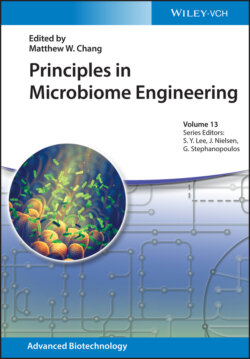Читать книгу Principles in Microbiome Engineering - Группа авторов - Страница 19
1.1.2 Elements that Influence Microbiome Development
ОглавлениеVarious elements play a role in shaping the respective microbiome in the human body. Extensive studies comparing the variation of the gut and skin microbiome of twins suggest that the genetic component does play some role in modulating the microbiome, it is the daily habits, interactions, and age that has a stronger influence on the development of the microbiome [44, 45]. A longitudinal study conducted to investigate the oral microbiome variation between monozygotic and dizygotic twins showed that diet plays an important role to shape the microbiome. This study looks at the demineralization of enamel and salivatory composition that showed that food preferences and eating habits (including eating etiquette) help shape the microbial community. These include the formation of multispecies biofilm communities that establishes a stronger foothold in the microbiome. It was shown that there are great variations between the microbiome of twins, although there is a closer similarity of microbiome between monozygotic twins in comparison to dizygotic ones [44]. In another study comparing the core gut microbiome of obese and lean twins similarly showed variation between the microbiome of twins, where monozygotic twins have closer similarity to each other, while dizygotic twins were shown to resemble the maternal microbiome. This observation is similar for both obese and lean twins observed in this study [45]. Thus, it is certain that the dietary role plays an important factor in the establishment and maintenance of the host microbiome. This will be discussed at length in the subchapter 1.2, addressing the nutrition‐based role in changing the microbiome landscape. However, before we delve into subchapter 1.2, we here address basic terminologies used in the following part of this chapter.
